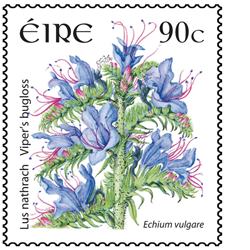Doug Tallamy, professor and chair of the Department of Entomology and Wildlife Ecology at the University of Delaware and author of “Bringing Nature Home,” finds that most homeowners’ plant choices, though visually attractive, are threatening our future. And our decline begins with the insects. “The highlight (of the lecture) is: Plants matter,” said Tallamy. “We’ve come to think of plants in the last 100 years as decorations. We’re landscaping just for aesthetics. Eighty percent of the plants in people’s yards are non-native, typically from China. Those are poor at supporting native insects. When we don’t support insects, we do in our birds.” It is the veritable canary in the coal mine. With an estimated 96 percent of terrestrial birds feeding primarily on insects, any loss among those populations will be felt further up the food chain, humans included. As the non-native plants spread and stifle the insect species, humans, too, feel the effects, as fewer pollinators are present for crops. Tallamy said, “It’s not just our landscapes we transformed. It’s clobbering the food web and doing us in.”
Tallamy cites two popular songbird species as examples of the vital need for insects. He said, “To rear one clutch of chickadees, it takes 4,800 caterpillars. Your bluebird would not be there, unless it had 30 caterpillars per day to eat.”
Tallamy admits that birds are used to bring the message home for a good reason. “People don’t like insects; they like birds,” said Tallamy. “That bush in your yard is either a bird feeder or it is a blank space.”
Source: Star News Online, 9th October 2012
http://www.starnewsonline.com/article/20121009/ARTICLES/121009638?p=2&t…

- Login om te reageren
